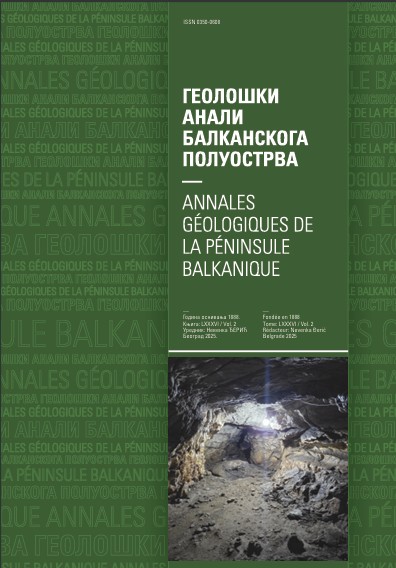Comparative assessment of radial collector well elements with a new approach
Uporedno definisanje elemenata radijalnih bunara primenom nove metode
Abstract
In radial collector well design or rehabilitation it is extremely important to define the capacity of the location and the long-term sustainable discharge of the well. Where incrustation occurs, groundwater entrance velocities at horizontal screens also need to be determined. At Belgrade Groundwater Source, maximum permissible screen entrance velocities are correlated with the oxic state of the aquifer, expressed via the redox potential, and the concentration of bivalent iron in the groundwater. The entrance velocities limit the rate of screen incrustation and are based on the maximum permissible increase in local hydraulic resistance at the screens. This is a novel approach on a global scale. In the case of anoxic groundwater, the derived permissible entrance velocities are much lower than estimated by standard, commonly used methods. The new approach is believed to be a significant contribution to well design. Jaroslav Černi Institute for the Development of Water Resources (JCI) has developed software for estimating 3D groundwater flow, which relatively easily and realistically simulates horizontal screens and riverbed configuration and conductivity. The software is an effective tool for determining the capacity of the location and of the radial collector well itself. It is especially useful where the aquifer system comprises a semi-permeable interbed between the water-bearing layer, in which the screens are emplaced, and the overlying strata. A comparative hydrodynamic analysis of two wells at Belgrade Groundwater Source is presented in the paper. One of the wells (RB-16) clearly reflects the presence of a semi-permeable interbed, whereas the other (RB-46) does not.
Copyright (c) 2017 Geološki anali Balkanskoga poluostrva

This work is licensed under a Creative Commons Attribution 4.0 International License.










